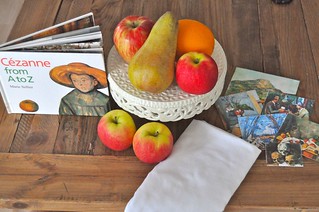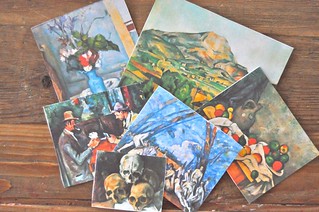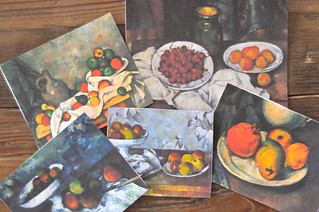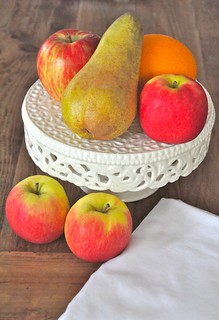Paul Cezanne was the second great artist I introduced to the kids this year. I picked this particular one as he did such a splendid job painting apples and that was perfect for us who were talking about fall and apples that week. As usual, I tried to engage the kids (nearing 3 years old to 5 years old) prior to having them make their own creation...Here's how it went:
 |
| Cezanne Art Appreciation for Kids |
ENGAGING THE CHILD
 |
| Still-Life or Not? Cezanne Paintings Sorting |
When it comes to art appreciation, it can be a bit difficult to engage children because they are so eager to go create a masterpiece of their own. I always try to find an irresistible way to introduce artists so they'll want to stick by my side long enough to appreciate art before creating it. Here, I kept it simple, scattering a few printed paintings by Cezanne on a low table. It featured some of his most famous work, to include three still-life. At first, I let them children look at the paintings by walking around the table. Then I asked them "personal" questions such as which one was their favorite. I also asked them to describe the colors the artist used and the topic of his paintings. We eventually concluded that some paintings showed people and others did not. I asked Adrian and Zahavah whether they remembered what living and non-living meant. They did. We went further into our exploration by identifying which painting depicting a living scene and which depicted a non-living scene. The landscape was a tough one...! Was the landscape "inanimate"? Was the grass still growing? Were the flowers in the field cut as they are in the vase?
EXPLORATION BY THE CHILD
Another way to explore still-life paintings by Cezanne was to show several pieces as I did here. I picked various ones showing different fruits and we had a good time trying to guess which fruit was illustrated on the paper. We also discussed placement of the fruit. Were dishes used? What colors are in the backgrounds? Dark? Anything else in the painting? Kitchen towels, jugs? Eventually, the kids concluded that the dark backgrounds, white plates and towels made the brightly colored fruit pop from the paintings. We also looked at how the fruit produces shadows on other fruits and how they are multi-toned.
CREATION BY THE CHILD
Prior to being seated with their colored pencils and paper, the children had to put together their own still-life to be drawn. I provided fruits, towels, bowls, etc. In the end, Adrian and Zahavah decided to use apples, a pear and an orange. I was asked to put the pear on top of the orange so I did. Once the scene was created, the kids went on to draw. We used colored pencils so they could press harder to create shadows which we had discussed earlier.
ASSESSMENT BY THE CHILD
At the end of the class, I invited the children to answer a few simple questions such as: "Did you do your best today with your drawing?", "What kind of drawing did you do today?", "What is a still-life anyway?" and "Can you tell me the name of the artist we talked about today?".
ENRICHMENT FOR THE CHILD
 |
| A few books on Cezanne written with kids in mind |
For children who really liked the lesson, I have books aimed at kids featuring our artist. Cezanne from A to Z (by Marie Sellier) doesn't have nearly as much text as the others and is better suited for my class but the other two were still quite nice for reference and for a look at more paintings. Kids can play more "still-life or not?" or simply enjoy the pictures.
* * *
Your comments make my day !
(Please note : comments won't be visible until after my approval!)
* * *
Today, I'm happily linking up to
Montessori Monday, The Kids Co-Op, Show-and-Share Saturday, Link & Learn, TGIF, Share it Saturday, Mom's Library, The Sunday Showcase, Sun Scholars's For the Kids Friday, Tuesday Tots, Preschool Corner &5K, We Made That.
If you would like me to link up with you, please don't hesitate to ask, it might take me a week or two, but I generally do!


No comments:
Post a Comment